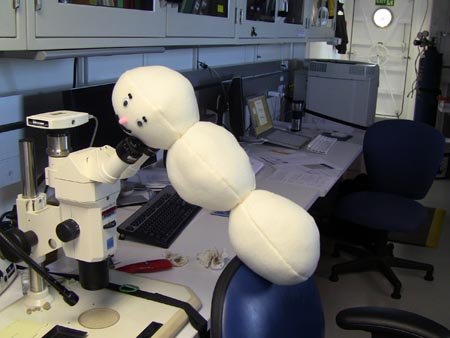
The Study of Rocks
Hi, I’m Jr, the scientist today. Today I’m going to tell you about a type of scientist, onboard, known as a petrologist. Petrology is the science of studying how rocks form. So a petrologist is a person who studies rocks. There are two petrologists on Expedition 329, Christopher Smith-Duque (from Great Britian) and Guo-Liang (from China). Their job is to describe the rocks that make up the seafloor. Petrologists carefully describe the details seen in the rocks, things such as the color, the size of any minerals, the arrangment (order) of the minerals, and indications that the rock may have been changed since it formed.
Petrologists use a variety of tools, besides their eyes, things such as a magnifying glass, extremely thin slices of rock, and x-ray diffraction. The magnifying glass lets them see some of the mineral crystals (shapes) more clearly. The thin slice of rock is placed under a microscope and the minerals can be identified. The x-ray diffraction machine is more complicated. Energy, called x-rays, are sent into the rock and when they come out, their path has been changed. These altered paths, (diffraction), are different for each mineral. This is a very simplified description of how it actually works.
.jpg)
.jpg)
.jpg)
.jpg)